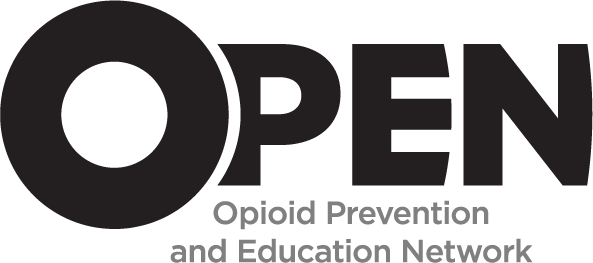General Introductions
MiSUPER Community Webinars
MSU Extension's Michigan Substance Use Prevention, Education, and Recovery (MiSUPER) periodically hosts community webinars which explain the science of opioid use, how opioids have impacted Michigan and rural communities in particular, and how people can support those in recovery. Organizations may also request these presentations for their staff or the general public.
PBS NewsHour: How a brain gets hooked on opioids
A five minute video and article which explains how opioid addiction works.
What is Naloxone?
This short animation depicts how Naloxone, an opioid overdose-reversal medication, works in the body.
Words Matter
People with substance use disorders and people who use drugs more generally face significant stigma. Changing the language we use surrounding substance use is the first step in combating this stigma by prioritizing people and dispelling the notion that addiction is some character flaw.
NIDA's introduction to stigma and first-person language is an excellent starting point for those looking to combat stigma related to substance use.
Advanced Introductions
For those who would like a deeper understanding of opioids, their history, opioid receptors, and treatment. All articles listed here are open-access and available to be read by anyone.
Pharmacology and History
Historical Review: Opiate Addiction and Opioid Receptors
Shaocheng Wang
An introduction to the biological mechanisms of opioid dependence and the mu, kappa, and delta subtypes of opioid receptors as well as each subtype's unique characteristics.
Management of Pain in the United States—A Brief History and Implications for the Opioid Epidemic
Stephen A. Bernard, Paul R. Chelminski, Timothy J. Ives, and Shabbar I. Ranapurwala
An overview of conceptions of pain and its treatment as well as the contributors to the epidemic of opioid overdoses within the United States.
Risk Factors for Opioid Use Disorder
Opioid Prescription Patterns and Risk Factors Associated With Opioid Use in the Netherlands
Ajda Bedene, Willem Lijfering, Marieke Niesters, Monique van Velzen, Frits R. Rosendaal, Marcel L. Bouvy, Albert Dahan, and Eveline L.A. van Dorp
An analysis of the risk factors of opioid prescription. As one might expect, self-reported back pain, rheumatoid arthritis, and fibromyalgia are associated with receiving an opioid prescription. Individuals are also more likely to receive an opioid prescription if they are older than 65 years of age, have only a primary school education, being widowed, reporting always feeling symptoms of depression, and reorting poor or very poor physical health.
The Developmental Origins of Opioid Use Disorder and Its Comorbidities
Sophia C. Levis, Stephen V. Mahler, and Tallie Z. Baram
The authors describe the effects of early life adversity on the brain's reward circuit and the implications for later development of opioid use disorder and other co-occurring psychiatric conditions including depression, bipolar disorder, and schizophrenia.
Stigma regarding Opioid Use Disorder
Pharmacy Students’ Perceptions and Stigma Surrounding Naloxone Use in Patients with Opioid Use Disorder: A Mixed Methods Evaluation
Alina Cernasev, Michael P. Veve, Taylor Talbott, Elizabeth A. Hall, and Kenneth C. Hohmeier
Pharmacists report a general reluctance of patients to request information regarding naloxone. They identify the prevalence of patient-perceived stigma and limited access to naloxone, limiting its potential use as a life-saving medication.
Stigma as a fundamental hindrance to the United States opioid overdose crisis response
Alexander C. Tsai, Mathew V. Kiang, Michael L. Barnett, Leo Beletsky, Katherine M. Keyes, Emma E. McGinty, Laramie R. Smith, Steffanie A. Strathdee, Sarah E. Wakeman, and Atheendar S. Venkataramani
Descriptions of the different types of stigma that exist and can lead to poorer health outcomes in those with opioid use disorder. These include 1) negative sterotypes about people with opioid use disorders such as perceptions of moral failings, 2) enacted stigma, how stigma manifests in behavior, and 3) structural stigma in which these sterotypes and behaviors become cultural norms or inform policy.
Treatment of Opioid Use Disorder
Opioid use disorder and treatment: challenges and opportunities
Kim A. Hoffman, Javier Ponce Terashima, and Dennis McCarty
An outline of the opioid use disorder and its treatment using opioid maintenance therapy (i.e., MOUD, MAT), describing its lack of utilization and its necessity within the multifaceted approach to treat OUD.
The "black box" of treatment: Patients' perspective on what works in opioid maintenance treatment for opioid dependence
Teresa C. Silva and Fredrik B. Andersson
The authors describe patient experiences with treatment for opioid use disorder, highlighting that many patients emphasized that relationships and connection can be of equal importance to MOUD in sustaining recovery.
Legal and Novel Opioids
Kratom—Pharmacology, Clinical Implications, and Outlook: A Comprehensive Review
Steven C. Eastlack, Elyse M. Cornett, and Alan D. Kaye
Kratom, or Mitragyna, is a plant indigenous to Southeast Asia which acts as a partial opioid receptor agonist. It is known to be one of the most popular "legal highs," as only a handful of states have banned its sale. Although users report use as an alternative to more potent, dangerous opioids for which possession is criminalized, there have been reports of kratom addiction and toxicity, particularly through hepa- and neurotoxic effects. This article outlines the pharmacology of kratom, its potential for disordered use, and its potential toxic effects.
U-47700 and Its Analogs: Non-Fentanyl Synthetic Opioids Impacting the Recreational Drug Market
Michael H. Baumann, Graziella Tocco, Donna M. Papsun, Amanda L. Mohr, Melissa F. Fogarty, and Alex J. Krotulski
Illicitly manufactured fentanyl is a well-known contributor to many fatal opioid overdoses, particularly due to its potency. Novel Synthetic Opioids (NSOs) pose similar threats as opioids that continue to be synthesized and sold for recreational use. This article describes U-47700 as an example of these NSOs and discusses implications for research, clinical practice and clinical practice.



